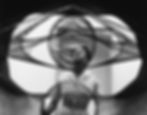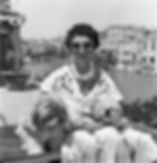I’m BACK with Art of the Deal – PART 3.

A series where I delve into some of art history’s most key and influential art dealers within the history of the art market.
Today, I look at someone who is actually better known for her collection than what she is her dealer status, BUT she is no less influential in bringing to our attention some of the greatest names in Abstract and Surrealist Art from Europe and America before, during and after the second world war.
Yep, today, it’s time to take a look at influential dealer and collector – PEGGY GUGGENHEIM
‘I ALWAYS DID WHAT I WANTED’
Peggy Guggenheim
Who was Peggy Guggenheim?
Peggy, real name Marguerite, Guggenheim was an American collector, dealer and socialite who lived from 1898 to 1979. Born into the wealthy Guggenheim family, she was the daughter of Ben Guggenheim who sadly perished on the Titanic in 1912. Upon turning 21 in 1919, she inherited a fortune of almost $2 million, which is the equivalent to almost $40 million in today’s money.

What group of artists did she promote?
Peggy was known for her love of the abstract and surrealists and dedicated her life to collecting and promoting the works of artists which fell into either of these categories.
Where did she Operate?
Peggy lived the first 20 years of her life in America and upon conducting a grand tour of Europe, the ‘must do’ thing for any wealthy person in America, met and fell in love with her first husband in Paris in 1920 who introduced her to his circle of Avant-guard writers, thinkers and artists. Here, she meets the likes of Man Ray, who photographed the young heiress countless times and befriends art history big leagues such as Constantin Brâncuși and Marcel Duchamp, a friend whose art she was eventually to promote.
BUT – it was not until the breakdown of her marriage in 1937 that she set herself up as an art dealer in London after ‘wanting something to occupy her time.’
When a friend suggested she opened a gallery. She jumped at the chance!
When WW2 approached, Guggenheim moved to Paris and then back to New York in 1941 where she opened a ground breaking gallery which became the talk of the town.

What did she do that was ground breaking and influential?
From the moment she opened her gallery in London, it became the place to ‘see’ art – I say ‘see’ because people were not exactly rushing there to buy pieces of abstract and surrealists artists. It was here historians believe the idea for her art collection first began, and she began compiling a list of what she believed the ‘Ultimate’ collection of abstract and surrealist art should contain.
Guggenheim was also famous for the saying she lived by - ‘Buy a picture a day.’
When she moved to New York and set up her gallery, which was on the 7th floor of a building, she knew she needed to curate a space which would ‘get people talking’ and so she hired a set designer and architect called Frederick Kiesler to create something striking. Her gallery was called ‘Art of the Century.’
What was ‘Art of The Century.’
As mentioned above, this was Guggenheim’s gallery on 30 West 57th Street in New York.
She hired set designer and architect called Frederick Kiesler to create something striking, an experience for the senses – and boy did he deliver.
Be broke the gallery down into two rooms – abstract and surrealist.
In the abstract room, he created undulating walls which were coloured blue. Works were hung from the ceiling on wire constructions but NEVER shown in a frame. Frames were a society construct meant to confine art – Guggenheim would not allow this. The floor was also painted Turquoise. Why? It was Peggy’s favourite colour.

The Surrealist room? That was even more bonkers – He created a room with wooden concave walls and works were hung on the end of wooden rods. The best part? He installed a lighting system which changed every 30 seconds to place a new work in the spotlight.

The gallery became the talk of the town and THE place to be shown for any up and coming artists worthy of collecting.
If this is not a ground breaking move for a dealer – I don’t know what is!
Did she develop any techniques?
Her techniques were simple – she asked contemporary artists who she respected, and who were considered the ‘head’ of their groups of painters to sit with her and recommend works by other artists which she should consider to collect and show.
Initially, she sought the help of Marcel DuChamp who encouraged her to buy from the likes of Brancusi, Matisse and Picasso, although she did have a run in with Picasso which I will get onto.
She also worked with leading art critics of the day to help champion the artists she showed. In the UK, it was renowned art historian, writer and critic Herbert Reed.
In New York, she worked closely with critic Clement Greenberg who, along with Guggenheim, were the team who spearheaded and catapulted Jackson Pollock to the dizzying successes he achieved during his short life.
How did she select the artists she would show?
Simple.
She only showed artists she loved and worked with leading art critics and artists at the time to compile a list of works which she considered to be worthy of showing in ‘the greatest collection’ ever.
She also used her power and influence in society to help artists be recognised.
She was not only a collector and patron of them, but she introduced their works around the world to new markets who would not have seen them before.

Anything we should know about her but don’t?
Yes – if it was not for a meeting with Samuel Becket in London, Peggy would have continued collecting and showing Old Masters as this was the preferred genre of the collector. However, it was Becket that told Guggenheim –“Art is a living thing’ and so she looked into contemporary artists working at the time.
Love affairs
Peggy is also surrounded by stories of love affairs and love triangles with artists, their wives and partners BUT for me, this is a CLASSIC example of when a woman does something like this it is considered a scandal and that she held low morals. Yet, Peggy was just doing what every other person she came into contact with was also doing. Her third husband, Max Ernst, started an affair and left her for artist Dorothy Tanning. Is that massive news? Not really – yet her love affair with Pollock is one of Arts most talked about.
Side note – not condoning affairs here – just saying those who live in glass houses should not through stones.
Run in with Picasso
As mentioned above, Guggenheim has a run in with Picasso as the artist pissed her off one day while she was visiting his studio.
While looking at the contents of his studio, and perhaps taking a little more time than the famous artist was used to, Picasso famously, in front of his group of on lookers said to Peggy:
“Madam you are in the wrong location, ladies’ lingerie is on the second floor.”
Safe to say, she did not buy a work from the artist that day and left shortly after the encounter.
How did she buy her work?
Guggenheim never bought a work on impulse. She worked through a carefully curated list of names she wanted to attain.
Saved artists from the Nazi’s
This in itself is a blog post but Peggy helped fund the removal of artists from Paris to the states who were under threat of being handed over by the French Government to the German authorities all because they produced what the Nazi’s called degenerate art.
This included the safe removal of her future husband Max Ernst and friend Andre Breton who were forever in Guggenheim’s debt.
Did she ever do anything with British Artists?
She did show works by some British artists in her gallery BUT she was mainly concerned with promoting the work of the abstract and surrealists’ artists she had come across in her travels and while she was living in Paris.

How does she effect the art world today?
You may or may not have heard of a museum known as the Guggenheim Museum?
Well – there are actually 5 Guggenheim museums all over the world which can be found in New York, Venice, Bilbao (Spain), Abu Dhabi and Berlin. Although the last I checked the Berlin gallery had closed.
When she moved to Venice in 1947, Guggenheim was famous for introducing Europe to what was later known as the ‘New York School’ which included the likes of Jackson Pollok and Mark Rothko. Europe had never seen such works before.
She bought an old Palazzo in Venice on the grand canal which was semi –demolished and she opened to the public to view her collection of Modern Art there.
It also became a safe haven for artists.
Did she start the Guggenheim Museum chains?
Alas, no – she did not. This was actually her Uncle Solomon Guggenheim who began the chain in the 1950s BUT Peggy’s collection in Europe was a corner stone of the development.
She left her home and collection to the Guggenheim foundation upon her death in 1979.

Where can I find out more about her?
There are several excellent sources to learn more about Peggy Guggenheim.
First – her autobiography – Confessions of an Art Addict is available to buy from all good book stores and selling platforms.
YouTube has a wealth of resources which include a specially commissioned film Peggy Guggenheim: Art Addict which you can buy or rent through the platform
There is also an INCREDIBLE lecture on Guggenheim delivered by art historian Marlene Strauss who speaks so beautifully on Peggy and her life. I would highly recommend watching it if you have a spare hour:
And, of course, there is always the Guggenheim website.
Join me on the last Monday of every month till the end of 2020 to explore the 6 dealers who form my series – The Art of The Deal.’
Written and researched by
Jo McLaughlin September 2020
Art of the Deal - Part 3